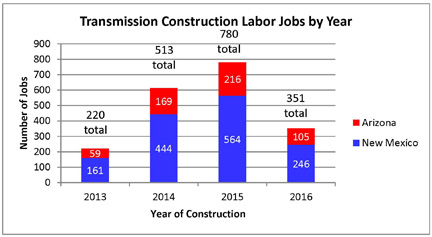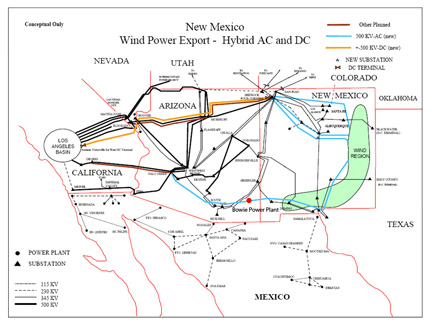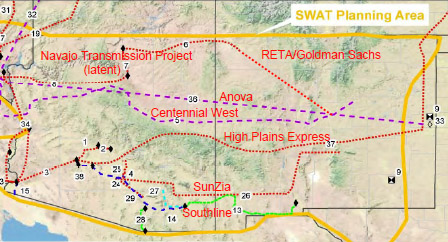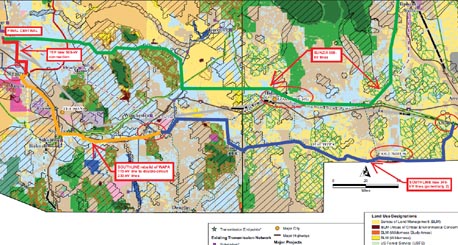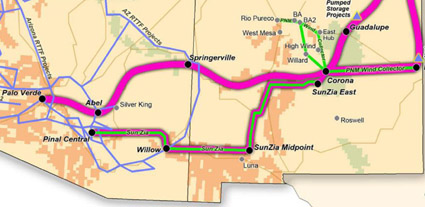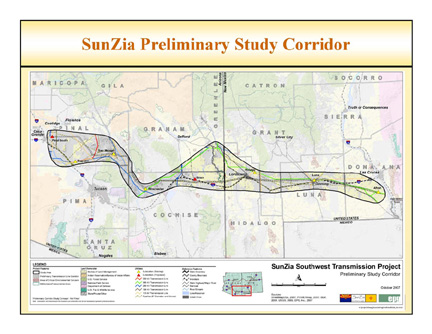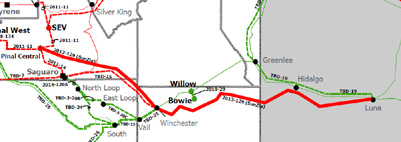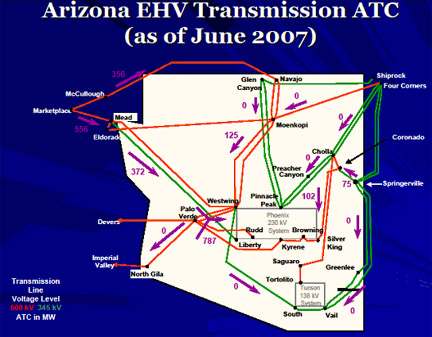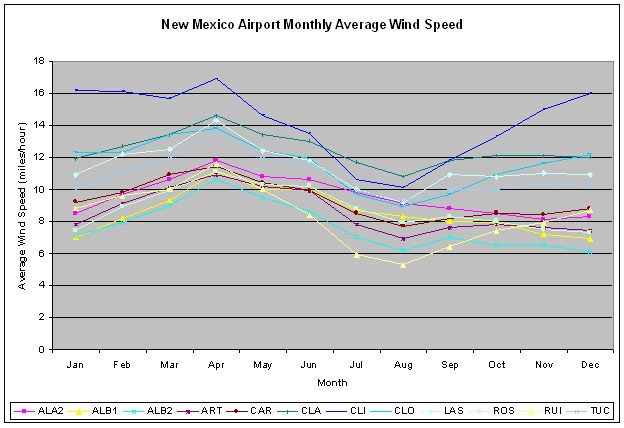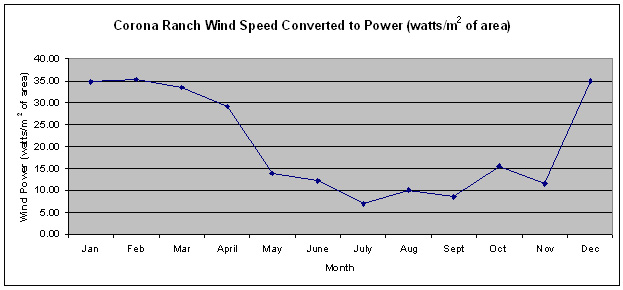SunZia Project Reports and Related DocumentsThe following are reports on various aspects of the SunZia Project written predominantly by Norm "Mick" Meader of the Cascabel Working Group. These stem from basic research into the origins of the project and related issues.
1a. Second Review (1/17/12) of the SunZia Southwest Transmission Project Economic Report 1b. Review of the SunZia Southwest Transmission Project Economic ReportIn late 2011 the SunZia Southwest Transmission Project released two economic studies entitled “SunZia Southwest Transmission Project Economic Impact Assessment” and “Impacts of Potential Alternative Generation Facilities.” The job numbers from these reports that SunZia has provided in press releases and published articles are misleading because job-years of work are reported as jobs. SunZia claims that transmission project will create 6,200 jobs when the maximum number of jobs supported is only 2,459, reached in year 3 of construction. Of these 2,459 jobs, only 780 are actual construction jobs, and only 234 of these will actually go to workers in Arizona and New Mexico. In addition, SunZia claims that the project would create 36,700 renewable energy-related jobs when a more realistic number would be between 13,000 and 14,000. These renewable energy jobs also depend upon a highly unrealistic assessment of how many renewable energy projects would actually be constructed and are questionable in themselves. By Norm "Mick Meader, January 3, 2012. Report Link (file size is 276 k)
2. SWAT Background on the Origin of the SunZia Project and Constraints on the Project’s Capacity to Carry Renewable Energy In 2004 Governor Bill Richarson of New Mexico created a task force to work on the development and export of wind energy from the state, and in response, the Southwest Area Transmission Regional Planning Group (SWAT) proposed a hypothetical route for a 500-kV line to run from central New Mexico to Phoenix via El Paso and Tucson. The Southwestern Power Group (SWPG) noted that this line went very close to its permitted 1,000-MW Bowie, Arizona, power plant, and SWPG then proposed the SunZia Project along this route to serve its Bowie plant. In the end, SWPG did not avail itself of the wind data available for New Mexico and how those data constrain the project physically and economically. By Norm "Mick Meader, July 17, 2011. Report Link (file size is ~400k) 3. How Much Renewable Energy Can the SunZia Southwest Transmission Project Actually Carry? A feasibility study by the High Plains Express Project that included SunZia concluded that it is not economically or physically realistic for a regional-scale transmission project to carry primarily renewable energy. A mixture of renewable and nonrenewable generation is required. Varying mixes of three basic forms of generation must be considered to calculate how much renewable energy SunZia can carry: (1) renewable (wind) generation, (2) nonrenewable dispatchable generation, and (3) nonrenewable base-load generation. This report examines five basic scenarios for mixes of these sources, how much renewable power SunZia would carry for each, and what system utilization would be. If renewable energy dominates the system, system utilization is too low to be economic. Under practical scenarios, it is difficult to achieve a 50% usage of the system by renewable energy. Many hundreds of such hypothetical scenarios, however, using varying capacity factors would have to be calculated to fully characterize the project. By Norm "Mick Meader, July 14, 2011. Report Link.
4. Eastern Arizona Interstate Transmission Projects as of June 2011 As of June 2011, six east-west interstate transmission projects are proposed to bring New Mexico renewable energy to Arizona and California: (1) Anova, (2) Centennial West Clean Line, (3) High Plains Express, (4) New Mexico RETA/Goldman Sachs, (5) Southline, and (6) SunZia. All but the Southline Project would bring at least some wind-generated electricity from New Mexico to Arizona and California markets. This report summarizes the basic characteristics of each project and provides maps and schedules for each if available. By Norm "Mick Meader, June 9, 2011. Report Link (file size is 2.7 MB) 5. The Southline Transmission Project - An Alternative to SunZia in Southwestern New Mexico and Southeastern Arizona The Southline Transmission Project is a proposed southwestern New Mexico-southeastern Arizona transmission project that would connect the Afton generating station northwest of El Paso with the Saguaro generating station north of Tucson, ultimately connecting to Pinal Central and the Palo Verde hub through Tucson Electric Power Company's new 500-kV lines. It essentially parallels the SunZia Project over this distance and would access solar energy resources in predominantly southwestern New Mexico, what SunZia proposes to do. The Southline Project consists of up to two new 345-kV lines in New Mexico and an upgrade of a WAPA 115-kV line in Arizona to a double-circuit 230-kV line. The Southline Project accomplishes what SunZia would in this area with far less environmental impact and is a serious alternative to consider. Associated Files: |
Cascabel Working Group
A grassroots organization concerned with the cultural and ecological integrity of the lower/middle San Pedro Valley
A grassroots organization concerned with the cultural and ecological integrity of the lower/middle San Pedro Valley


